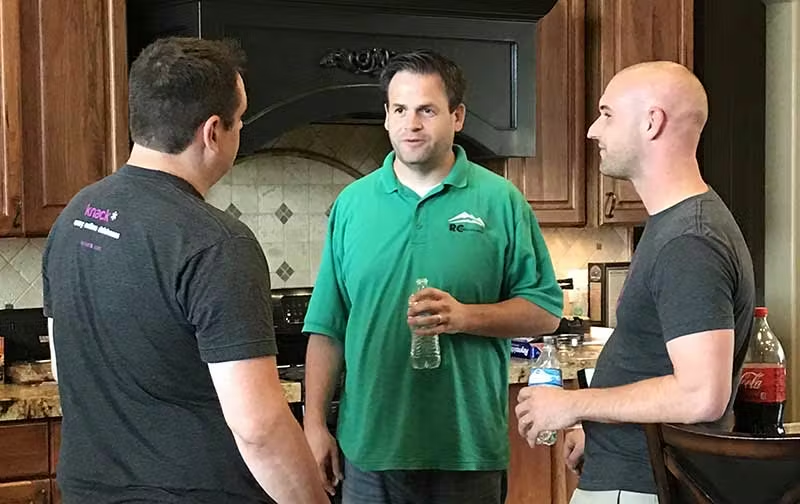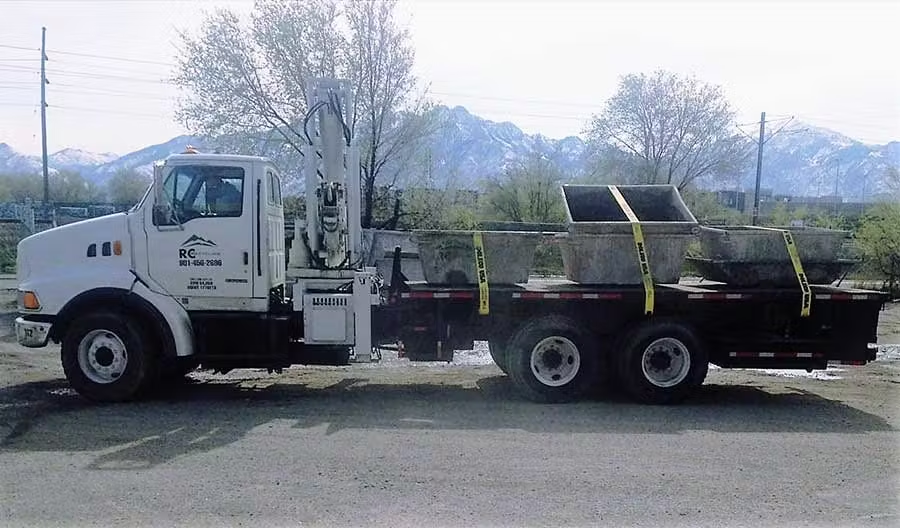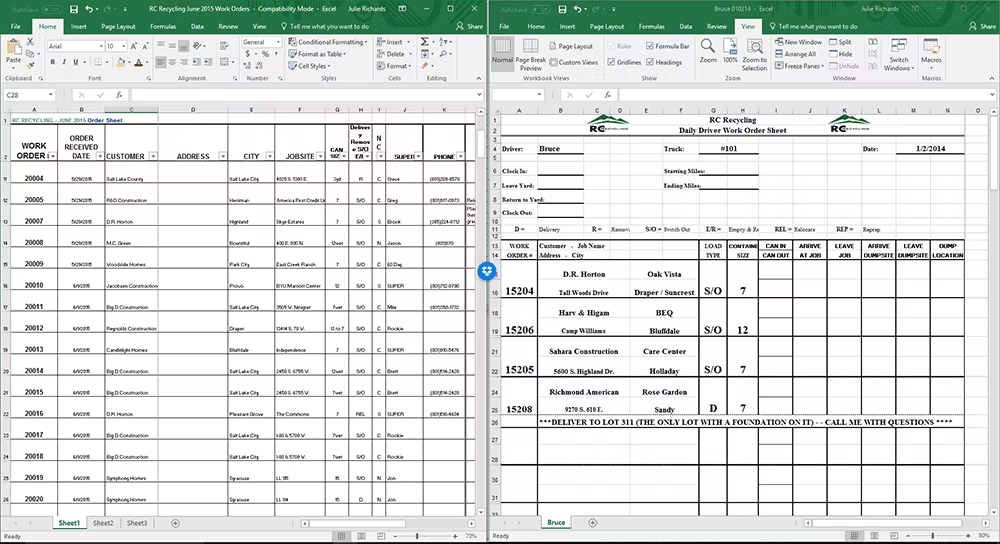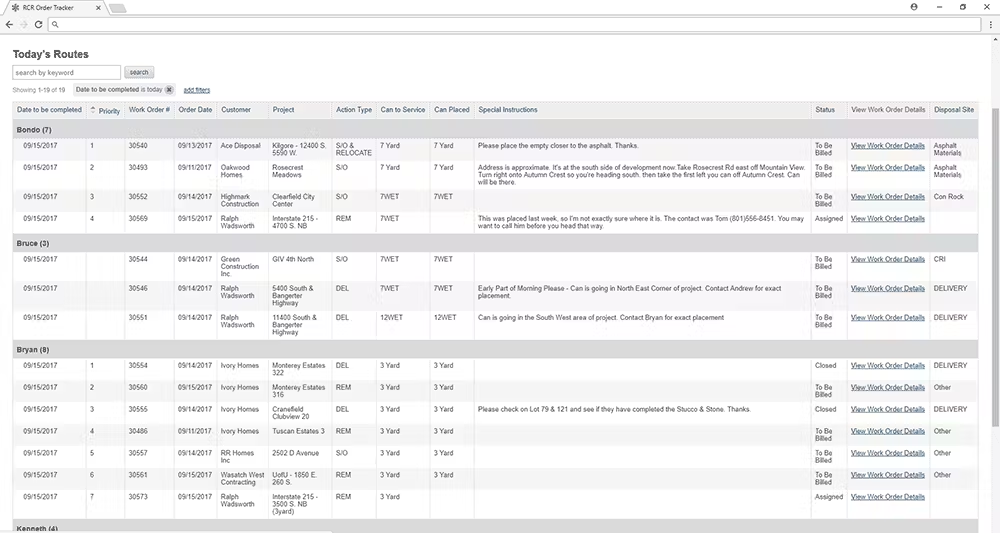A Little Workflow Can Go a Long Way
When a brother-in-law encouraged Mike Richards to try a cloud-based database instead of juggling a complex network of Excel spreadsheets, he didn’t know where to begin.
He knew that he needed to do something. Mike was wasting 2 hours each day moving data around several spreadsheets to stay on top of his recycling projects, containers, and drivers.
Mike tracked down Knack, and what he built has changed the way his business operates.

Mike chatting with team Knack at our Salt Lake City retreat.
“What I thought was going to be a simple database ended up being a really important tool for our company,” he explained.
How Mike uses Knack is a perfect example of how data management isn’t just about storing it properly. It’s about how you can make data work for you to improve your business operations.
What I thought was going to be a simple database ended up being a really important tool for our company.
Concrete & Containers
Mike owns a business called RC Recycling, which is headquartered in Salt Lake City, Utah.
RC Recycling helps construction companies comply with strict EPA guidelines by properly disposing of any waste resulting from cement mixing.

One of Mike’s trucks loaded with concrete containers.
Every cement mixer has to be thoroughly cleaned before it can leave the job site. RC Recycling uses large waste containers that are low to the ground so cement mixers can be moved directly over them and cleaned. Any concrete residue and runoff is gathered into the containers while they are hosed down.
Once the waste container is full, RC Recycling transports it to a recycler who then grinds the leftover material and reuses it for road base or other construction projects.
When Your Data Works Against You
Mike’s business involves tracking a fair amount of data. In the past, he had a spreadsheet that listed all his projects, and each company’s information. Another stored details on the containers, including size and when they were last serviced.
Mike takes all the calls for the company himself, so he’d speak with customers, listen to their requests, and put those in another spreadsheet.

Examples of Mike’s spreadsheet madness.
These would then have to be divvied up to create drivers’ daily routes, so each day he was creating work order lists for each driver — another four or five spreadsheets.
These couldn’t be updated in realtime so managing last minute changes and requests was laborious. It also meant little insight into completed jobs, availability, and how to distribute new requests.
Everything just came together. Now it all works off of the same database.
Workflow to the Rescue
Now that he’s moved this system to Knack, not only is Mike’s data much better organized, he’s created multiple workflows that ensures this data is effectively driving operations.
When customers call in, Mike creates a work order in his app, assigns it to a driver, and it immediately appears on that driver’s personal list assigned records. Now each driver can pull up his route on his phone at the start of the day and be immediately notified when new routes are added.

A dashboard view of each day’s orders at a glance.
Once a driver completes a work order, he can close it out on his phone, which then sends it from the ‘Assigned’ queue into the list of work orders that need to be billed.
This in turn has simplified much of the company’s billing process. RC Recycling has to invoice customers twice a month, a process that used to be entirely separate from its day to day operations. Now a ‘Work Orders to Be Billed’ tab presents all the projects from the previous two weeks that need invoices, including details on each job, company, and the amounts due.
What used to take five or six different steps is now just a matter of a few clicks and some automated workflows.
“Everything just came together,” explained Mike, “now it all works off of the same database.”
Beyond Better Organization
The workflow automations Knack helped create didn’t just replace a broken system of spreadsheets; it helped Mike completely optimize his company’s operations.
Assignments and information move between stages in Knack just as those tasks progress through their day-to-day operations within the company. In other words, Mike’s data is no longer working against him — it works for him.
Another welcome consequence of Knack has been the flexibility it offers. As his company has grown, so too have Mike’s responsibilities. Because Knack is web-based, he can work from anywhere, including from home. He no longer deals with printed spreadsheets and doesn’t need to rush to the office each morning.
He’s even been able to hire a part-time dispatcher, who helps take phone calls and route drivers. She’s a stay-at-home mom, and thanks to Knack, she can work entirely from home, helping with all the work Mike used to have to do from the office. And any changes she makes are immediately visible by Mike and his drivers, regardless of their location.
One last feature Mike plans to add into his database is a notification whenever a driver has finished his route for the day. That way, if there’s time left and a last minute job comes in, he can have someone already on the road take care of it the same day.
Aside from that, the rest of his bases are covered with Knack. “To be honest,” he said, “I don’t know what more there is do.”


